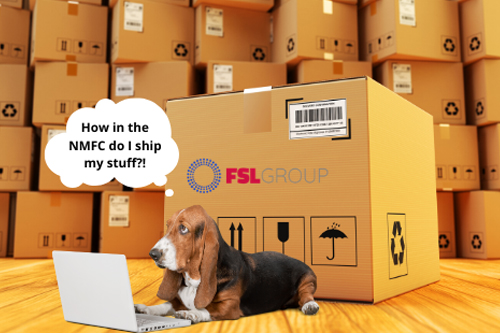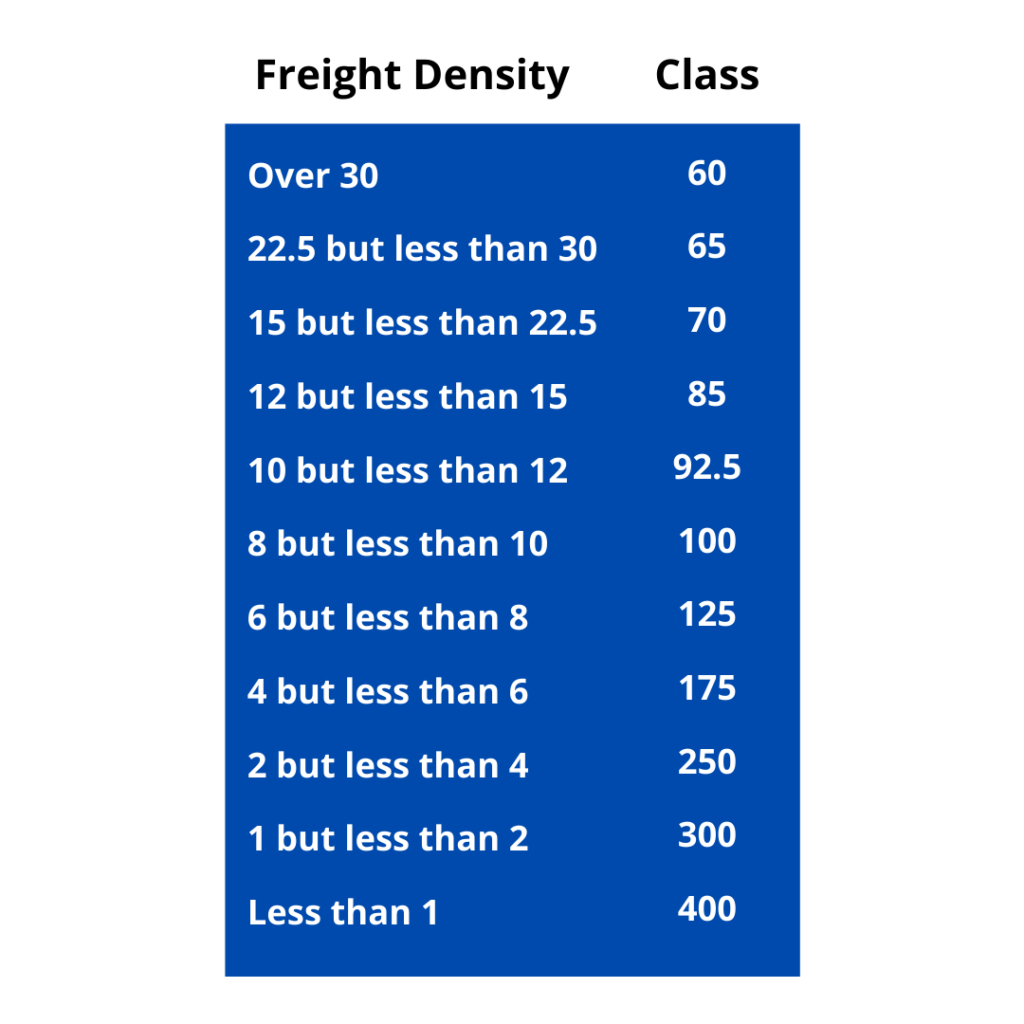MISTAKE # 1: Estimating the Shipment Weight
Estimating the weight on the Bill of Lading (BOL) will lead to additional fees and may cause delays in transit. When a carrier suspects that the weight listed on the BOL is inaccurate, they will reweigh the shipment. Carriers often perform randomized reweighs and some carriers go through the trouble of reweighing every single shipment. Unless the shipper-carrier contract says otherwise, each time a shipment is reweighed and an error is found, an extra fee will be charged. Sometimes that could significantly raise the cost of the overall freight bill when the shipment is re-rated under the new weight. It’s simply best not to test your luck by guessing the weight.
How this mistake affects freight claims:
A freight claim will be paid based on the maximum liability under the freight classification, multiplied by the weight of the damaged or lost goods. Even if a shipment is reweighed at a heavier weight, carriers will often use the weight listed on the BOL to pay a lower liability. By placing an inaccurate weight on the BOL, shippers risk receiving a lower settlement if a claim were to occur.
MISTAKE # 2: Using an Incorrect Freight Classification
Using a lower Freight Classification to ship may get you the cheaper shipping price, but it’ll cost you even more later. National Motor Freight Classification (NMFC) has a wide range of different types of material and classifications per density. However, NMFC codes often change creating confusion for shippers. Sometimes, it’s easier just to go with the lowest assumed classification for the cheapest rate. Inspections have become more common in recent years with advanced technology that allow carriers to calculate density quickly and accurately. When a carrier reclassifies a shipment, there is an extra fee added for the service and the freight bill is recalculated under the new freight class. This is how a $80.00 freight bill can quickly turn into $300.00.
Best practice – Start calculating the freight class based on the density of the shipment to avoid inaccuracies. The calculation is simple: Multiply Length x Width x Height in inches. Divide the total cubic inches by 1,728 (the number of cubic inches in a cubic foot) to convert to cubic foot. Divide the shipments weight (in pounds) by the total cubic feet. Use the guide below:
Length x Width x Height (in) = Total Cubic Inches
Total Cubic Inches x 1,728 = Total Cubic Feet
Total Cubic Feet x Weight (lbs) = Freight Density
How this mistake affects freight claims:
Freight classification will determine the maximum liability under their corresponding FAK (Freight of All Kinds). For example, a carrier’s Rules Tariff may state that FAK 50 has a maximum liability of $1.00/lb, but FAK 85 has a maximum liability of $10.00/lb. Therefore, if a shipment was mistakenly shipped under FAK 50 instead of FAK 85 this could mean that the 100 lbs of damaged goods valued at $800.00 will only yield $100.00 in maximum liability instead of the full amount of the claim. A small mistake can cost a lot later.
MISTAKE # 3: Improperly Signing a Delivery Receipt
When shipments are delivered, it is the consignee’s responsibility to count and inspect the freight and sign for any shortages or damages. When these types of discrepancies are not noted properly on a Delivery Receipt (DR), the claims process becomes far more difficult. Vague notation of discrepancies can quickly result in the claim declination.
Best practice: Be descriptive and make sure the writing is clear. Example: “1 box crushed. Material inside cracked & scratched beyond repair.”
Things Not to Note on the Delivery Receipt:
- “Subject to inspection” – This is not a clear notation of actual damage or shortage of the material. Carrier will not consider this as a valid discrepancy.
- “1 box short” with shrink wrap intact – When a carrier picks up ONE shrink wrapped pallet, they are responsible for delivering just the one shrink wrapped pallet. This is called a “Shipper Load & Count” (SLC) shipment. The carrier does not count the boxes within, the shipper does. Therefore, if 1 pallet is delivered intact, the carrier did their part in delivering the freight. Who is to say that the shipper didn’t miscount?
- “Pallet broken” – When something like this is noted, it means that the material is okay.
How this mistake affects freight claims:
When discrepancies are NOT noted properly on a Proof of Delivery (POD), the claims become much more difficult to dispute. Concealed damages and shortages need to be filed generally within 5 days of delivery for the claim to even be entertained. IF enough evidence is provided to show that the carrier is at fault, oftentimes concealed claims only result in 1/3rd of the maximum liability.
Simple Solution: Check the freight and properly note discrepancies.
MISTAKE # 4: Not Seeking Professional Help When Necessary
While a company’s operations team may consist of a wide range of people who have experience in shipping & receiving, they are not always well versed in the legal jargon to receive the best outcome when handling contracts & claims. By not utilizing a professional to negotiate the best shipping rates and handle the intricacies of carrier contracts, shippers often unknowingly leave money on the table. When hiring a third-party logistics provider, you want to look for a company that does more than just book freight. Companies that offer multiple logistics services, such as Carrier Management, offer more competitive rates and better carrier compliance. Their long-term relationships with LTL carriers gives them higher leverage when negotiating pricing and allows them to hold carriers to a higher accountability. Additionally, they will be able to customize contracts to your liking and offer better discounts in peripheral areas such as accessorials. Consider a third-party logistics provider that specializes in multiple areas within logistics to get the most out of your LTL contracts.
How this mistake affects freight claims:
Managing LTL claims is tedious, time consuming, and can pile up quickly if the right person is not managing it. When shippers choose to manage LTL claims internally, they may be overlooking a more cost effective way to operate. Outsourcing Claims Management allows shippers to save money in multiple ways:
1. They can avoid high payroll fees, days of proper training, and costly claims management software.
2. Those who negotiate the carrier contracts are the best fit to manage claims because they understand the contract fully. They are able to fight for every last penny by properly mitigating your claim to reach the highest settlement.
3. Hourly employees lack the motivation to push for the best outcome. Third-party providers fight harder because most often they are paid based on the settlement amounts or by the amount of claims filed.
By avoiding these four mistakes and making simple operational changes, shippers can save money tremendously. Speak to a logistics professional to learn more about how to avoid these costly mistakes. Start a Conversation Today!


